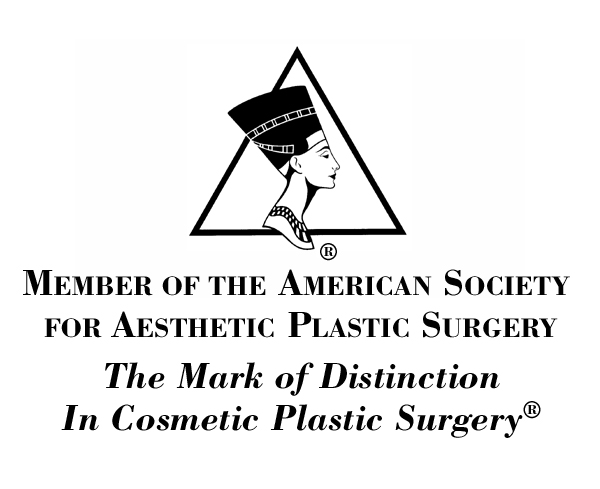
Breast augmentation remains the most frequently performed cosmetic plastic surgery procedure in the United States. At the recent American Society for Aesthetic Plastic Surgery (ASAPS) meeting in Washington DC, breast implants, and breast implant revision surgery were hot topics.
I had the opportunity to compare notes with other breast augmentation revision specialists both formally and informally. National meetings are a great place to share information. Instructional courses are useful, but informal conversations with other Board Certified Plastic Surgeons who are faced with the same opportunities and challenges that I face can be just as enlightening.
What’s new in Breast Implant Revision Surgery?
Neosubpectoral Pockets
Implant malposition includes breast implants which are:
- too close to the center (symmastia or bread loafing)
- too low (bottoming out)
- too wide apart (heading for the armpit)
- or too high
are all addressed by modifying or changing the pocket in which the implant sits.
For symmastia, the problem is that the implants are too close together, so that the skin between them becomes elevated. Traditional treatment has been to close off the pocket centrally to reestablish cleavage. If the implant is above the muscle, they can be moved to new pockets below the muscle. This allows for the creation of two new pockets that are separated sufficiently in the center to preserve the definition between the two breasts.
When the implants are below the muscle, they can be moved to in front of the muscle. There are some disadvantages to moving the implants to a subglandular (in front of the muscle) position. This is where the neosubpectoral pockets can help. The name literally means “new pocket under the pectoralis muscle”. By working outside the old pocket’s capsule, a new space can be created for the implant. This can be used to correct symmastia and other problems with implant malposition.
Acellular Dermal Matrix (ADM’s)
An Acellular Dermal Matrix is dermis that has been treated to remove all the living cells, leaving a collagen matrix that can be used off-lable as an internal patch to help cover breast implants. It can be used to help disguise rippling and to help support an implant that is displaced. Both human and pig skin are used in the manufacture, and the off-the-shelf availability is a big plus when the native tissue is sparse. Brand names include:
- Alloderm (Lifecell/Acelity-human derived)
- Strattice (Lifecell/Acelity-pig derived)
- Flex HD (Ethicon-human derived)
The downside – it is very expensive. A sheet of ACD costs more than a breast implant. So when local tissues are available, it can save you thousands of dollars.
Fat Grafting and Stem Cell Grafting to the Breasts
Interesting cases where presented of utilizing fat (which contains lots of stem cells) as a volume expander for the breast. Some techniques involve suction expansion of the breasts for a month or longer before grafting to increase the size and vascularity of the recipient bed. This is bleeding edge new, and the long term results are unknown.
Breast are mostly fat, and the principle of replacing like with like is a good one. However, if some of the graft doesn’t take – it dies, and dead fat can lead to lumps, hard spots, infection and calcifications. The problems with lumps, hard spots, and infection are pretty clear, so what is the problem with calcifications? Calcifications are what we look for on mammograms to help identify breast cancer. They stand out as bright white spots in the relatively dark breast tissue, and make identifying breast cancer much easier. If a breast is already full of calcifications, it can be very hard to identify a breast cancer. Either every calcification would need to be removed (making the breast smaller) or risk the early detection of a breast cancer. The implications of increasing the number of stem cells (cells that can become anything) in the breast is also unknown.
For now, research in this area should only be performed in carefully controlled studies. The problems that still need to be overcome include insufficient volume, unpredictable take, interference with mammography, long term outcome. Remember, before breast implants, not too long ago, free silicone was injected into the breasts to increase their size. It worked and felt very natural, at first. Long term, however, the breast became firm, lumpy and painful. The outcome may not be the case with fat grafting, but long term follow up is not yet available, and an assumption that everything will be fine is naive.
Gummy Bear Implants (Gummi Bear Implants)
Still awaiting FDA approval.
The most recent delay was rumored to be that the FDA was waiting to see that the current breast implant follow-up studies where progressing. I am an investigator for both Allergan and Mentor, and each has filled both their Saline Breast Implant and SIlicone Breast Implant follow-up studies. All that remains is to collect 10 years worth of data.
Will it take 10 more years to get FDA approval for the gummy bear implants? It took 14 years to get the current silicone implants re-approved.
EDIT: At the time of the original posting, Gummy Bear Implants were still awaiting FDA approval. But now they are available in the US.
Emend
Originally marketed to prevent the nausea and vomiting associated with chemotherapy (CINV), Emend is meant to prevent nausea and vomiting rather than treat it after it has occured.
Emend would need to be administered prior to post operative nausea and vomiting (PONV) to be effective. Currently this is an off-label use, and it has only sparingly been tried to date. Zofran, another medication that is currently widely used, started down the same path 20 years ago.
Risk factors for PONV:
- female gender
- young age
- non-smoker
- motion sickness
Since most of my breast augmentation patients have several of these risk factors, they all get treated prophylactically, often with several medications. If one med could prevent all PONV, it would simplify the treatment. Fingers crossed…
Previous Post Next Post